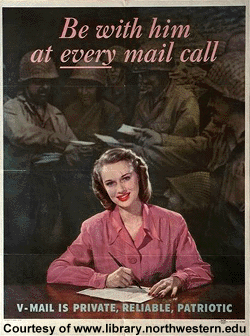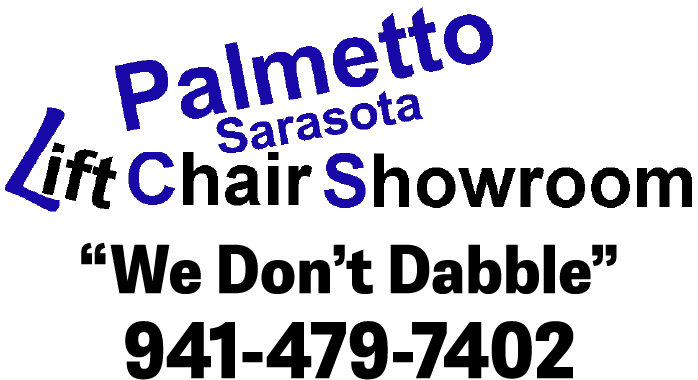Letters From Home

A ScooterLink Publication
A column for today's seniors by Cyn LoPinto, M.A., Gerontologist
|
|
LETTERS FROM HOME
|
|
During the Civil War, the Civilian Postal Service delivered mail. A postmaster was assigned to each regiment and there was a post office on the battlefield for troops. When the Spanish American War began, with soldiers fighting outside the U.S., the Civilian Postal Service followed them. It wasn't until WWI that the Army Post Offices were developed. These were still operated by the Civilian Postal Service, but with assistance from the troops themselves. By the end of WWI there were 169 Army Post Offices located in France. In 1940, during WWII, Congress established the Army Postal Service. This helped organize the different responsibilities between the military and the postal service. The amount of mail going back and forth between soldiers and family during WWII was overwhelming. These letters took up a lot of space. The military and postal service needed a way to reduce the bulk of mail without reducing the amount of letters. The answer was V-mail. The special V-mail letter sheets were actually a combination of letter and envelope. The sender would write out his/her message in the space provided and then fold it into the shape of an envelope. It even contained a "gummed area" for sealing. These forms were always free of charge for servicemen, but while free at first for those in the U.S., they later had to be purchased. Letters were mailed out, reduced and placed on microfilm. These films would then be sent to receiving stations where individual letters were printed out and delivered to the awaiting addressee. It was e-mail in its infancy! During the Korean War, mail delivery became very difficult. Factors that hampered distribution included inadequate ground transportation, rugged terrain and bad weather. Letters making it in and out of Korea took on an even greater meaning. Communication was hard for both soldiers and family. Men and women fighting in the Vietnam War relied on the mail to help build up morale. Care packages became a high priority for soldiers during this war. Familiar and often humorous items sent from home helped lift spirits and pass the time. During the height of Desert Storm, an estimated 81 tons of mail were delivered per day to deployed troops. The Any Service Member Mail Program was established at this time. This program was developed for civilians to send unspecified members of the U.S. armed forces letters and care packages. This program was significant in building morale to the soldiers over in the Gulf region. Today with troops deployed throughout the Middle East and in other areas of the world, it is especially important to keep this tradition alive. "A Solider's best friend, next to his rifle, is the postman." - Lt. Gen. Walt Boomer Soldiers' Angels - https://soldiersangels.org/letter-writing-team.html |
.jpg) Mailing letters to the men and women serving in the armed forces has been an American tradition for years. Such correspondence provided a link between what was taking place on the front lines and events happening back at the homefront. For family members, this form of communication helped combat feelings of loneliness and provided some much-needed reassurance. For soldiers, letters from home were critical in boosting morale.
Mailing letters to the men and women serving in the armed forces has been an American tradition for years. Such correspondence provided a link between what was taking place on the front lines and events happening back at the homefront. For family members, this form of communication helped combat feelings of loneliness and provided some much-needed reassurance. For soldiers, letters from home were critical in boosting morale. V-mail, with its "V" standing for victory, were pre-printed sheets that were photographed and transferred to microfilm. These films were then flown across the world and reproduced at the mail center closest to where the soldier was stationed. It was first used in England when British troops were in the Middle East. The U.S. Post Office Department adopted this and began using it in 1942. The main advantage of V-mail was how compact it was. By reducing the space needed for letters, more space was made available for war materials. With V-mail, a single mail sack could now hold 150,000 one-page letters instead of the 37 mail bags needed for the same amount of traditional letters.
V-mail, with its "V" standing for victory, were pre-printed sheets that were photographed and transferred to microfilm. These films were then flown across the world and reproduced at the mail center closest to where the soldier was stationed. It was first used in England when British troops were in the Middle East. The U.S. Post Office Department adopted this and began using it in 1942. The main advantage of V-mail was how compact it was. By reducing the space needed for letters, more space was made available for war materials. With V-mail, a single mail sack could now hold 150,000 one-page letters instead of the 37 mail bags needed for the same amount of traditional letters.